All of Colorado is just bursting at the beaver seams. In addition to hosting their own beavercon this year, and their first beaver festival this summer, they are working hard to let actual beavers do their actual jobs.
Leave it to Beavers: Cross-species collaboration may help restore wetlands
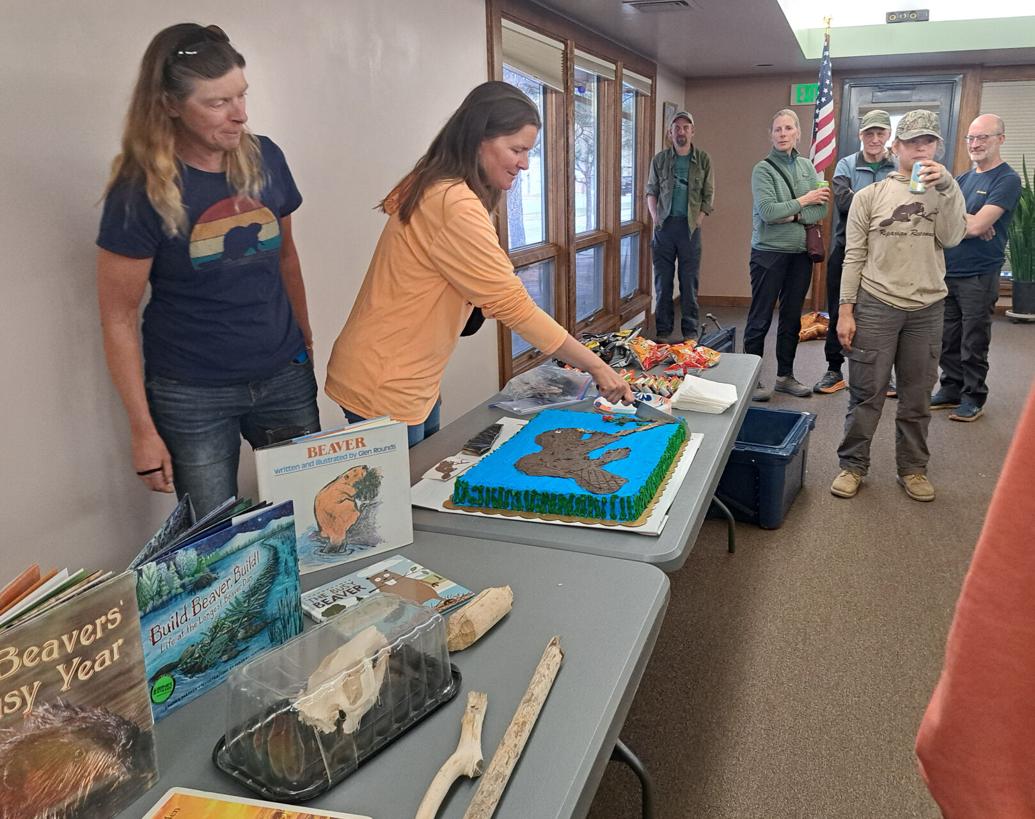 Envision Chaffee County held a conversation on Apr. 23 with the leader of an ecological initiative that hopes to restore wetlands in the Fourmile Creek area, which, in addition to restoring biodiversity in the region, may prevent sediment from accumulating in downstream reservoirs.
Envision Chaffee County held a conversation on Apr. 23 with the leader of an ecological initiative that hopes to restore wetlands in the Fourmile Creek area, which, in addition to restoring biodiversity in the region, may prevent sediment from accumulating in downstream reservoirs.
Ecologist Mark Beardsley, principal with EcoMetrics and the Colorado Open Lands project Riparian Reconnect, shared his enthusiasm for the hydrological engineers of rodentdom at a talk at the Buena Vista Community Center on April 23.
“We said, gosh, how can we control all the sediment coming down into the Arkansas River? Because that sediment sometimes kills fish and kills aquatic bugs and fills up reservoirs with gunk,” said Envision Chaffee County executive director Cindy Williams. “Mark helped us figure out that really the best way to control sediment is to enhance wetland using beavers … We’re super excited about the project. I mean, big picture. I think this is probably the most notable and the coolest project of its kind in the state of Colorado. It’s given a lot of attention from all over the state, from a lot of people. It’s an opportunity to prove that this really works.”
Beardsley said that he initially expected to see resistance to wetlands restoration from owners of large water rights, as wetlands lead to greater evaporative water loss compared to simple streams.
“The fact that these sediment dynamics are in play and these trapping mechanisms are there has gotten the attention of very important people, the types of people that originally scared me as people that wouldn’t be interested in this,” Beardsley said. “Colorado Springs Water, Denver Water, (Northern Colorado Water Conservancy District), these people are all in, starting to invest in headwaters restoration and restoration of this type.”
A “majestic animal” in Beardsley’s eye, beavers are awkward on dry land but highly adapted to living in the water. A keystone species, they engineer their environment to suit their needs. When they build dams in simple streams, the water pools and floods outward rather than continuing to deeply incise a single narrow channel in the earth, raising the water table and allowing a riparian ecosystem to thrive.
Let beavers make their way in YOUR world too. They leave some truly epic footprints.
“These high elevation streams and wetlands wouldn’t be what they could be if it wasn’t for beavers. That point became exceedingly obvious the longer I spent looking at them,” Beardsley said.
When Europeans came to North America, they began hunting beavers for their thick pelts. The fur trade was a prime driver in the expansion westward and the North American Beavers were hunted nearly to extinction. Beardsley compared the extirpation of beavers to that of the bison.
The demand for beaver fur waned as silk began to replace it and beavers slowly but surely began to return. That brought them into conflict with humans.
“Other than humans, I’d say beavers are probably the most adept animals at changing their environment for their own use. They’re good. We call them ecological engineers. And so many other living things have adapted to live with the work that beavers do. But they don’t know that the areas that they’re coming back to, we may have already got other ideas about how that should be managed,” Beardsley said. “We’ve grown up with generations now that are thinking of these animals as pests, as nuisance animals. And they’re kind of still sort of classified that way, according to the state of Colorado.”
Beardsley hopes that the human-beaver relationship can move on from competition to collaboration, with people relying on the large rodents “as partners to restore some of these waterways that have become damaged.”
“This activity – building dams, blocking of water – that gives them these places where they can swim and get from food to shelter and all these places they need to go without having to waddle around like an awkward duck,” Beardsley said. “I almost said we could take advantage of that, as wetland restoration practitioners, and we kind of do, but I like to think of it as we partner with them. They get to do what they want to do. We get something out of it too.”
It’s a win-win whenever you cooperate with beavers. That’s for certain.
Not only do the dams capture sediment, but the wetlands they create can also help contain wildfires.
“Joe Wheaton, a famous beaver scientist, explains that very complicated thing in three words: ‘Water doesn’t burn’,” Beardsley said.
How would Joe the hydrologist feel about being called a famous beaver scientist? Well he’d like the word famous anyway.
Because of this, wetlands act as safe havens for animals during wildfires.
“This is the place where you hide, if you’re an animal. This is what spawns back, the regeneration of these habitats,” Beardsley said.
What EcoMetrics has been doing in Fourmile over the past several years is beaver mimicry: building beaver-like dams in waterways like Fourmile Creek to create wetlands and, more importantly, to invite beavers back into the area to build their own dams, showing the primates how it’s done.
Using historical aerial photography, Beardsley can infer where beaver populations are along Fourmile Creek and its tributaries by identifying the ecological footprint of beaver dams and lodges. He has identified 22 sites in Chaffee County that were once beaver habitats that are ripe for restoration.
“Our aim is, with Colorado Open Lands, to develop up to six projects to start moving forward on in the future,” Beardsley said. He’s been working on the Fourmile watershed project since 2017.
The impact of this kind of work over time can be seen along the road over Trout Creek, whose riparian zone was restored through a project by the Civilian Conservation Corps in 1933.
Before the project, the area around Trout Creek was described “as this completely denuded, decimated, destroyed landscape,” Beardsley said. A team of hundreds of workers built thousands of small dams along the waterway.
“Then they were seeding it, and they were riparian planting,” Beardsley said. “Another reason I think it worked is because beavers found it, and beavers keep finding it, and they’re maintaining it now.”
Here, we’ll take it from here Mark.To quote a famous beaver scientist, “Let the rodent do the work.”
Enos Mills would be so proud!


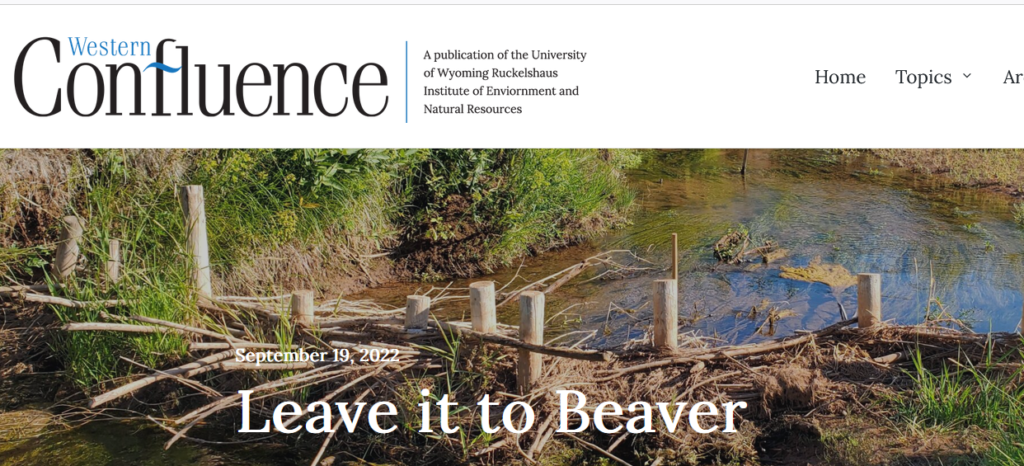
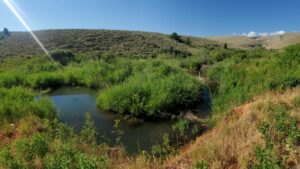
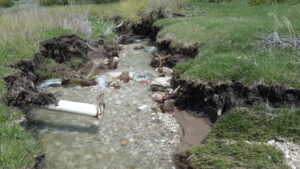
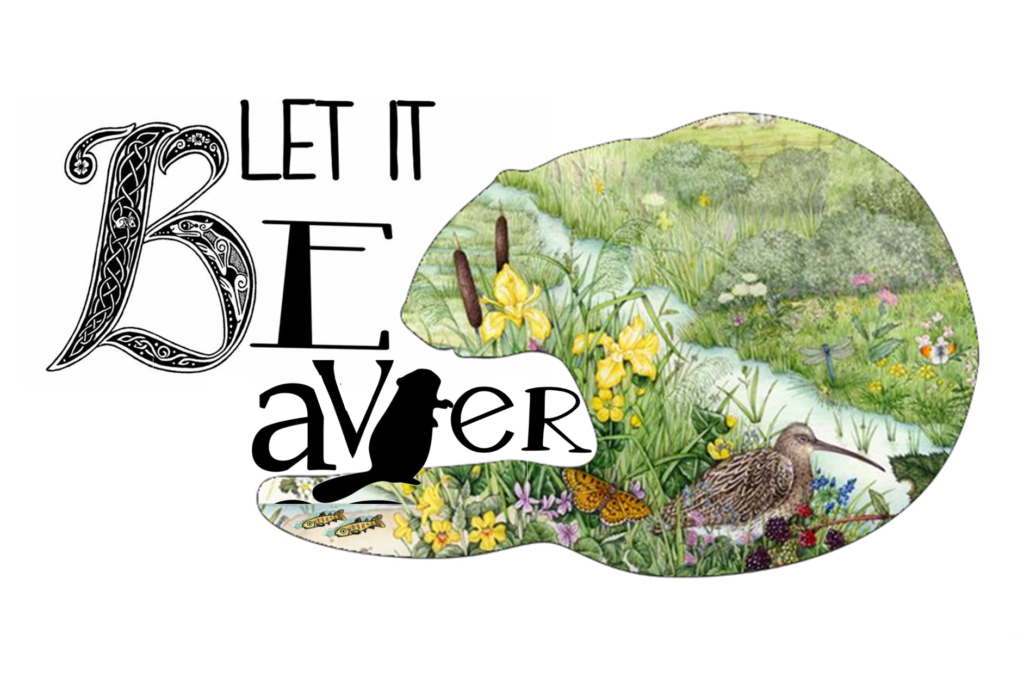




 I had such an interesting meeting yesterday. I was told by Joe Wheaton’s sister Anne that the mayor of St Helena wanted to know more about beavers and their impact on fire prevention. The meeting happened on Zoom and Brock Dolman and Kate Lundquist from OAEC were there too. He talked about identifying places for beaver in the Napa River and I pointed out that there already were plenty on the Napa River including some that are depredated for eating grape vines. Then we talked about how to involve and educate the public and how to get the wineries on board by stressing the impact they could have on fire. He was especially interested in coordinating with the
I had such an interesting meeting yesterday. I was told by Joe Wheaton’s sister Anne that the mayor of St Helena wanted to know more about beavers and their impact on fire prevention. The meeting happened on Zoom and Brock Dolman and Kate Lundquist from OAEC were there too. He talked about identifying places for beaver in the Napa River and I pointed out that there already were plenty on the Napa River including some that are depredated for eating grape vines. Then we talked about how to involve and educate the public and how to get the wineries on board by stressing the impact they could have on fire. He was especially interested in coordinating with the  It was a heck of an interesting meeting.
It was a heck of an interesting meeting.



































